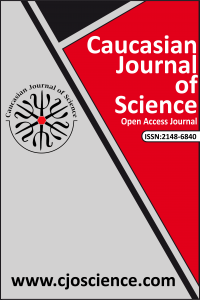İLKÖĞRETİM MATEMATİK ÖĞRETMENİ ADAYLARININ MATEMATİKSEL MODELLEME SÜRECİNDE TEKNOLOJİNİN ROLÜNE İLİŞKİN GÖRÜŞLERİ
İLKÖĞRETİM MATEMATİK ÖĞRETMENİ ADAYLARININ MATEMATİKSEL MODELLEME SÜRECİNDE TEKNOLOJİNİN ROLÜNE İLİŞKİN GÖRÜŞLERİ
The purpose of this study is to determinate of elementary mathematics teachers' thoughts
on the role of
technology in mathematical modelling process. The sample of this study is constitute 20 candidates who attend
last term in Karadeniz Technical University Fatih Education Faculty Department of Elementary
Mathematics Education. In the application process of teacher candidates, has
worked with groups of four on totall y 6
mathematical modeling problems.In application process, open internet access computer is provided that including mathematics
software
such as GeoGebra, Cabri Geometry.
Groups have been released about the use of technology. At the end of this
application, for deteminate the role of technology in solving problems of mathematical modeling, focus group
interviews were conducted in
order to obtain
their
views with each workgroup.
Answers about teacher candidates directed questions about to the role of technology in mathematical modeling process were analyzed
using qualitative research techniques.The analysis of data, it has been demonstrated the amenities provided by technological
tools, potential
difficulties without technological
tools, in mathematical modeling process, the effects of use of technological
tools from the perspective of teacher
candidates and
the
positive and negative effects of technology in mathematical modeling process.
It is believed that this study will bring a different perspective to researcher who use of technological tools in the mathematical modeling process
___
- Ang, K. C. (2010), Nanyang Technological University. Retrieved from http://atcm.mathandtech.org/ep2010/ invited/3052010_18134.pdf.
- Bayazit, İ., AKSOY, Y., & Kırnap, M. (2011), NWSA: Education Sciences, 6(4), 2495-2516.
- Doruk, B. K., & Umay, A. (2011), Hacettepe Üniversitesi Eğitim Fakültesi Dergisi, 41(41).
- Erbaş, A. K., Kertil, M., Çetinkaya, B., Çakıroğlu, E., Alacacı, C., & Baş, S. (2014), Kuram ve Uygulamada Eğitim Bilimleri Educational Sciences: Theory & Practice, 14(4), 1607-1627.
- Geiger, V. (2011), In G. Kaiser, W. Blum, R. Borromeo Ferri, & G. Stillman (Eds.), Trends in teaching and Learning of Mathematical Modeling, (ICTMA 14) (pp 305 – 314). New York: Springer.
- Ghosh, J. B. (2015), In Selected Regular Lectures from the 12th International Congress on Mathematical Education (pp. 203-222). Springer International Publishing.
- Haines, C., & Crouch, R. (2007), In Modelling and applications in mathematics education (pp. 417-424). Springer US.
- Hıdıroğlu, C. N. (2012). Teknoloji Destekli Ortamda Matematiksel Modelleme Problemlerinin Çözüm Süreçlerinin Analiz Edilmesi: Yaklaşım ve Düşünme Süreçleri Üzerine Bir Açıklama. Yüksek Lisans Tezi. Dokuz Eylül Üniversitesi, Eğitim Bilimleri Enstitüsü, İzmir.
- Jiang, Z. (2001). The Use of Technology in a College Mathematical Modeling Class.
- Jiang, Z., (2001). The Use of Technology in a College Mathematical Modeling Class. Retrieved from http://epatcm.any2any.us/EP/EP2003/index.html.
- Kadijevich, D., Haapasalo, L., & Hvorecky, J. (2005), Teaching Mathematics and its Applications,24(2/3), 114.
- Kissane, B. (2010), Mathematical Applications and Modelling: Yearbook 2010, Association of Mathematics Educators, 40.
- Lesh, R. A., and Doerr, H. (2003), In R. A. Lesh, and H. Doerr (Eds.), Learning and Problem Solving (pp. 3-33). Mahwah, NJ: Lawrance Erlbauum.
- Lingefjärd, T. (2000). Mathematical modeling by prospective teachers using technology (Doctoral dissertation, University of Georgia).
- Lingefjärd, T. (2006). Faces of mathematical modeling. ZDM, 38(2), 96-112.
- Milli Eğitim Bakanlığı [MEB], (2009a). Ortaokul matematik dersi (5, 6, 7 ve 8. Sınıflar) öğretim programı. Ankara.
- Milli Eğitim Bakanlığı [MEB], (2013). Ortaöğretim matematik dersi (9, 10, 11 ve 12. Sınıflar) öğretim programı. Ankara.
- Milli Eğitim Bakanlığı [MEB]. (2005a). İlköğretim 6–8. Sınıflar Matematik Dersi Öğretim Programı. Ankara: Talim ve Terbiye Kurulu Başkanlığı.
- Mousoulides, N., Chrysostomou, M., Pittalis, M., & Christou, C. (2010), CERME 6 – Proceedings of the sixth
- Congress of the European Society for Research in Mathematics Education. 199-208.
- National Council of Teachers of Mathematics (1989), Reston, VA: National Council of Teachers of Mathematics.
- Niss, M., Blum, W., and Galbraith, P. L. (2007), In M. Niss, W. Blum, H. Henn, and P. L. Galbraith (Eds.), Modelling and Applications in Mathematics Education (pp. 3-32). New York: Springer.
- Santos-Trigo, M., & Reyes-Rodríguez, A. (2011), International Journal of Mathematical Education in Science and Technology,42(3), 313-336.
- Yang, Z., & Yin F. (2015), 2015 International Industrial Informatics and Computer Engineering Conference (IIICEC 2015). 685-688.
- Yayın Aralığı: Yılda 2 Sayı
- Başlangıç: 2014
- Yayıncı: Kafkas Üniversitesi
Sayıdaki Diğer Makaleler
ÇAM, VİŞNE VE KAYISI REÇİNELERİNİN ANTİBAKTERİYAL ÖZELLİKLERİNİN İNCELENMESİ
Muzaffer ALKAN, Hicran ALKAN, Önder ALBAYRAK, Arzu ÖNEL
Salih KORKMAZ, Muzaffer ALKAN, Durmuş Ali BAL
BİLİMSEL BİLGİLERİN ÜRETİLME SÜRECİ: AKADEMİSYENLER ARASINDAKİ İNFORMAL YAPILAR
Alpaslan ŞAHİNOĞLU, Faik Özgür KARATAŞ, Tolga SAKA
EFFECT OF COOPERATIVE LEARNING METHOD ON STUDENTS’ ACADEMIC THEORETICAL KNOWLEDGE
